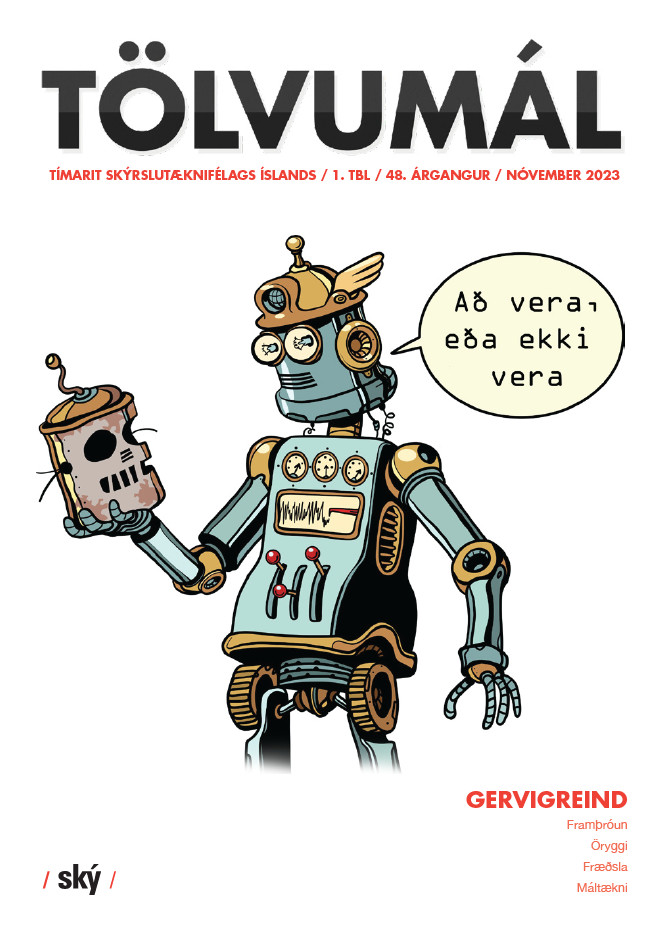
Using robots in education
 When I was young, robots in the classrooms were merely science fiction. But in recent years, educational robots have become increasingly popular as schools and teachers look for new and innovative ways to engage students in learning.
When I was young, robots in the classrooms were merely science fiction. But in recent years, educational robots have become increasingly popular as schools and teachers look for new and innovative ways to engage students in learning.
During my grade-school years, the most sophisticated educational device I had access to, besides the regular PC, was a digital keyboard designed to teach the proper way of typing on a keyboard. An incredibly monotonous exercise to which I paid very little attention. But I believe these more interactive robots could be a huge asset to students during their school years, and I cannot help but be jealous.
A big benefit of using educational robots is the hands-on learning experience they provide for students. Students can interact with the robots and see first-hand how they work, which sounds like a great way to make learning more engaging and memorable than regular classroom book learning. The robots could even be customized to provide different levels of complexity to enable students to learn at their own pace.
Many educational robots are designed with STEM (science, technology, engineering, and mathematics) fields in mind. They teach about programming, robotics and mathematics, teaching students problem-solving skills by presenting them with challenges that require creative solutions. Working through these challenges, students can develop critical thinking skills that will benefit them in a number of STEM related fields.
One example is The Lego Mindstorms robot kit. It enables students to build and program their own robots using Lego pieces and a programmable controller. The robot can be programmed to perform a variety of functions, such as following a line, avoiding obstacles, or navigating a maze. The Mindstorms kit comes with software that allows students to program their robot using a graphical programming language, so it is accessible to students with little programming experience.
But that is not the extent of the capabilities of robots for education. While many educational robots are designed for STEM fields, there are also different robots available for other subjects. An example would be using robots to enhance language learning by providing students with additional opportunities to practise and develop their language skills. They can be used to provide pronunciation practise, where students can speak to the robot and receive feedback on their accuracy. They could also be programmed to lead language exercises, such as vocabulary building games, or to engage students in conversation in a specific language.
Using robots in this way could make learning a language not just more interactive but also more effective, especially for students who may be hesitant to practise their language skills with human instructors. There is a big potential to transform language learning by providing opportunities for more practise and increasing student engagement in the learning process.
Another example is the social-emotional learning (SEL) robot, called the Miko Robot. It is designed to help children learn about emotions, empathy, and social skills in an interactive way. The Miko Robot uses artificial intelligence to engage with children through conversation, games, storytelling, and can also help children understand and regulate their emotions by recognizing facial expressions and responding appropriately.
The Miko Robot is a good example of how educational robots can be used to teach non-STEM subjects and help children develop important social and emotional skills. These kinds of robots could also be a huge boon to neuro-divergent students. The "Leka" robot is designed for children with autism spectrum disorder. This robot provides interactive therapy sessions for children with ASD, helping them develop social and communication skills. The Leka robot uses lights, sounds, and touch sensors to interact with children in a non-threatening way, encouraging them to engage in social play and conversation. It can be programmed to respond to specific behaviors and can track progress over time, making it an effective tool for therapy and education.
Now that we have seen examples of what these robots are capable of, what is the point? While providing students with robotic teachers' assistants could make learning more fun and engaging, they should not just be a gimmick.
The main focus should be to help prepare students for future careers, particularly in science and technology. With automation and robotics becoming more prevalent in industries, it becomes crucial for students to have a basic understanding of technology, and developing skills that are going to be in demand in the future is getting more and more important.
Many of these skills are related to technology and engineering, and educational robots can help students to develop these skills in a fun and engaging way. By providing a hands-on learning experience that is both practical and enjoyable, robots can help to prepare students for a wide range of careers in the future.
Educational robots can also potentially help to close the gender gap in STEM fields. Historically, women have been underrepresented in STEM fields. These robots can however help to break down some of the barriers that have traditionally discouraged women from pursuing careers in these fields.
Robots can help to spark an interest in STEM subjects among girls and encourage them to pursue these subjects in the future. Now you might be thinking; "Does this mean we should just replace all teachers with robots?". My answer is no. While robots can certainly educate, they lack emotional intelligence. They cannot replace the social and emotional benefits of interacting with a human teacher.
Robots should only be used in tandem with human interaction, and guidelines need to be established that should ensure robots are used in conjunction with human teachers and driven by the learning goals of the curriculum. They should be tools applied to education by teachers to enhance the students' experience.
Author: Kristján Tjörvi Kristjánsson, student at Reykjavík University
Sources:
- Mubin, O., Stevens, C. J., Shahid, S., Mahmud, A. A., & Dong, J. J. (2013). AREVIEW OF THE APPLICABILITY OF ROBOTS IN EDUCATION (pp. 1-5).
- Technology for Education and Learning. https://d1wqtxts1xzle7.cloudfront.net/45288492/A_review_of_the_applicability_of_robots_20160502-7820-ru2ja9-libre.pdf?1462225566=&response-content-disposition=inline%3B+filename%3DA_Review_of_the_Applicability_of_Robots.pdf&Expires=1679329670&Signature=Dx4IVfXeoRI4gsEq3s1ciXlUNxUDqWoFWpUvgVVnd37w4n1oKJcS04Iq-lleVDhOG4tePkIaLhrGsD7-7dKon3n6BlWZJacF~kCle3hBQdtCjeg-JqlFvVYhfbVQyg8bQCLgZD4zj~mp0iaeXhsAwH3VQfLNcjW~m~belzPQDrWVKnCsvxmxSfAUzgY5dmfj3mZ1xLGBaFzsDpwLixr4XSYv~~0AikCRJ84~idaSfC7A4Q8sKrZ3ZJjtSnMzhGH5FfYCBtxu7WKI3~xnX~8zj~pgABystTtLLTHHmntMiHmfG73FoZlrdsWJUDGDbCw-UiSfE~QDNvnr2nEVu9dK~g__&Key-Pair-Id=APKAJLOHF5GGSLRBV4ZA
- Social Robots as educators | OECD Digital Education Outlook 2021 : Pushing the Frontiers with Artificial Intelligence, Blockchain and Robots | OECD iLibrary (oecd-ilibrary.org)
- (PDF) An Educational Robotics activity to promote gender equality in STEM Education (researchgate.net)
Skil á efni
Leita í vefútgáfu Tölvumála
Um Tölvumál
Tölvumál - tímarit Skýrslutæknifélags Íslands er óháð tímarit um tölvutækni og hefur verið gefið út frá árinu 1976.
Vefútgáfa Tölvumála birtir vikulega nýja grein á vef Ský og árlega er gefið út veglegt prentað tímarit undir nafninu "Tölvumál" þar sem fjallað er um tölvutækni frá ýmsum sjónarhornum og er þema blaðsins jafnan valið snemma árs og útgáfa að hausti.
Ritnefnd Ský sér um að afla efni í Tölvumál og geta allir sem áhuga hafa sent inn efni.
